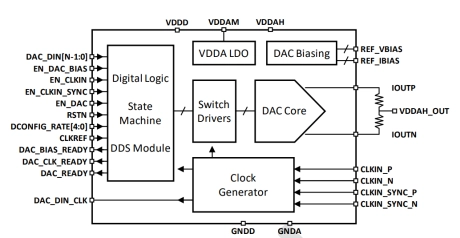D/A Converter (DAC) IP
DAC IPs (digital to analog converter) are dedicated to converting a digital signal that it receives as input into an analog signal which they transmit as the output. They serve the opposite function as compared to ADC IPs (analog to digital converter).
DAC IP cores are used to interface between the digital world to the analog world. For example: in music players and relevant devices where it converts digital information into audio signals which we allow us to hear music. They are also used in order to convert digital data for video material into analog signals so that the images and videos can be displayed on a screen. DAC IPs are also used in communication systems.
All offers in
D/A Converter (DAC) IP
Filter
Compare
239
D/A Converter (DAC) IP
from
38
vendors
(1
-
10)
-
24-bit audio inductor-less class-D DAC with efficiency and ultra-low latency capability
- Provide a top-tier performances audio DAC to fabless and IC companies willing to integrate audio features directly in their product and not using external IC
- High energy efficiency, ow power consumption,
- Ultra low latency for Active Noise Cancellation
- Embedded low noise voltage regulator for best resilience to power supply noise
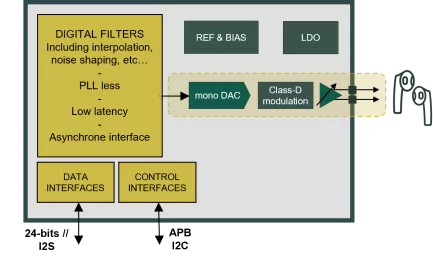
-
16-bit 5MSPS DAC on TSMC 16 FFC
- The ODT-DAC-16B5M-SV-T16 is an ultra-low power, voltage output, 16-bit DAC with a high performance, class AB output buffer.
- The DAC uses a proprietary architecture that guarantees monotonicity. It also features low glitch, low drift, small area and low power consumption.
- VSENSE pin is provided to set the load voltage with high accuracy. Both VOUT and VSENSE pins must be routed to the load.
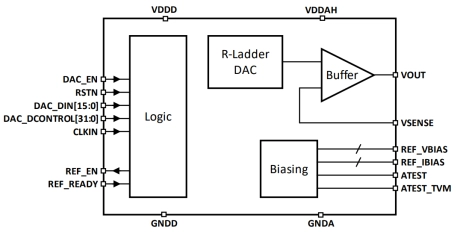
-
12-bit, 2 GSPS High Performance RF DAC in 12nm CMOS
- The ODT-DAC-12B2G-12 is a high-performance current steering 12-bit DAC that operates at an update rate of up to 2GSPS.
- The DAC uses a proprietary architecture that reduces harmonic and intermodulation distortions at high output frequency and amplitudes.
- The high-performance DAC supports 20mA (maximum) differential output current and achieves up to -149dBm/Hz noise spectral density with excellent SFDR.
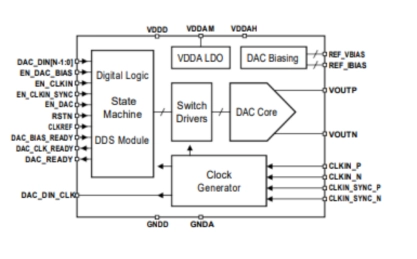
-
12-bit, 8-GSPS DAC Ultra Low Power on 7nm
- The ODT-DAC-12B8G-7nm is a high performance current steering 12-bit DAC that operates at an update rate of up to 8GSPS.
- The DAC uses a proprietary architecture that reduces harmonic and intermodulation distortions at high output frequency and amplitudes.
- The high-performance DAC supports a peak CW output power of 0dBm and achieves up to -160dBm/Hz noise spectral density with excellent SFDR.
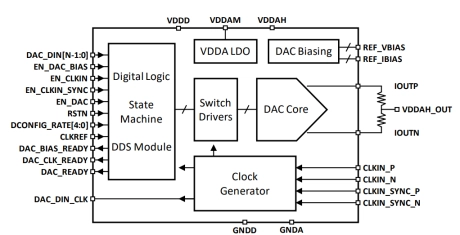
-
14-bit, 8-GSPS IQ DAC on GF 22FDX
- The ODT-DAC-14B8GIQ-GF22FDX is a high performance dual channel current steering 14- bit DAC that operates as an IQ Pair with an update rate of up to 8GSPS.
- The dual DACs uses a proprietary architecture that reduces harmonic and intermodulation distortions at high output frequency and amplitudes.
- The high-performance dual DACs support a peak CW output power of 0dBm and achieve up to -158Bm/Hz noise spectral density with excellent SFDR.
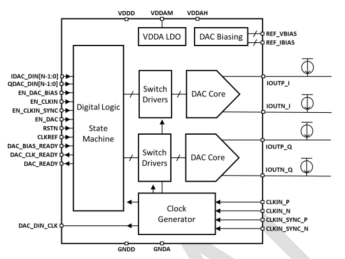
-
12-bit, 8 GSPS High Performance DAC in 16nm CMOS
- The ODT-DAC-12B8G-16 is a highperformance current steering 12-bit DAC that operates at an update rate of up to 8GSPS.
- The DAC uses a proprietary architecture that reduces harmonic and intermodulation distortions at high output frequency and amplitudes.
- The high-performance DAC supports a peak CW output power of 0dBm and achieves up to -153dBm/Hz noise spectral density with excellent SFDR.
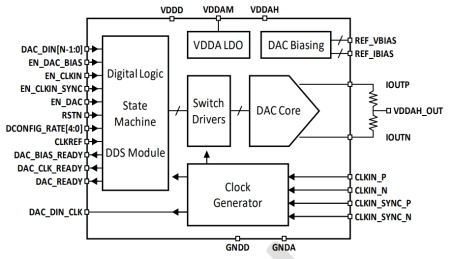
-
Ultra-low power, 5MSPS voltage output, 16-bit DAC with a class AB output buffer
- The ODT-DAC-16B5M-12 is an ultra-low power, voltage output, 16-bit DAC with a high performance, class AB output buffer.
- The DAC uses a proprietary architecture that guarantees monotonicity. It also features low glitch, low drift, small area and low power consumption.
- VSENSE pin is provided to set the load voltage with high accuracy. Both VOUT and VSENSE pins must be routed to the load.
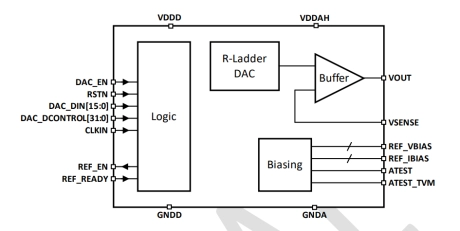
-
Current Output 12 Bit 250 MSPS DAC on 16nm
- The ODT-DAC-12B9G-16 is a high-performance current steering 12-bit DAC that operates at an update rate of up to 9GSPS. The DAC uses a proprietary architecture that reduces harmonic and intermodulation distortions at high output frequency and amplitudes.
- The high-performance DAC supports a peak CW output power of 0dBm and achieves up to ‑153dBm/Hz noise spectral density with excellent SFDR.
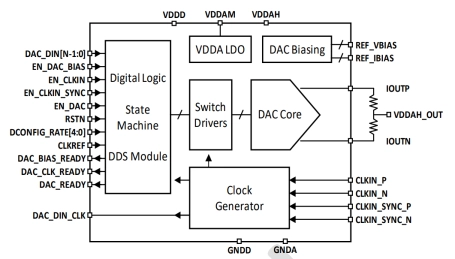
-
Current Source Output 14-bit 2.4GSPS RF DAC
- The ODT-DAC-14B2P4G-16FFCT-DC is a high-performance, ground referenced, current steering 14-bit DAC that operates at an update rate of up to 2.4GSPS.
- The DAC uses a proprietary architecture that reduces harmonic and intermodulation distortions at high output frequency and amplitudes.
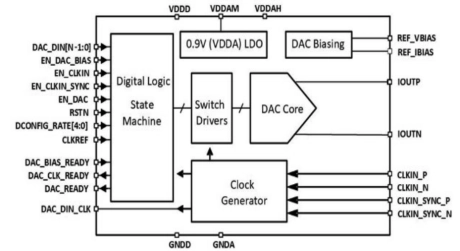
-
Current Output 12-bit 3.6GSPS RF DAC on 16nm FinFET
- The ODT-DAC-12B3P6G-16 is a high performance current steering 12-bit DAC that operates at an update rate of up to 3.6GSPS. The DAC uses a proprietary architecture that reduces harmonic and intermodulation distortions at high output frequency and amplitudes.
- The high-performance DAC supports a peak CW output power of 0dBm and achieves up to -153dBm/Hz noise spectral density with excellent SFDR.
